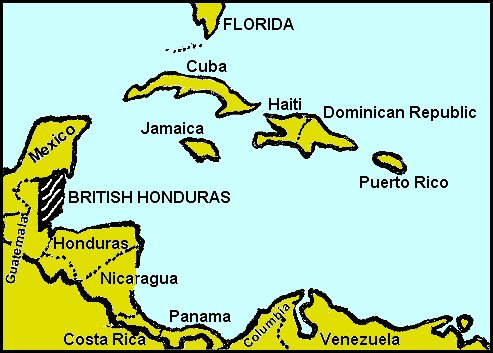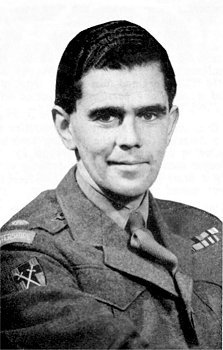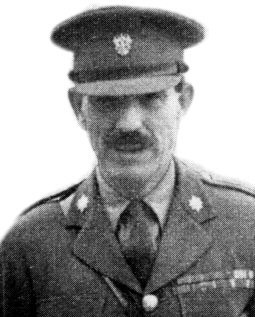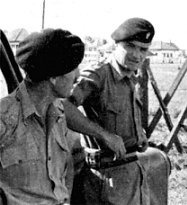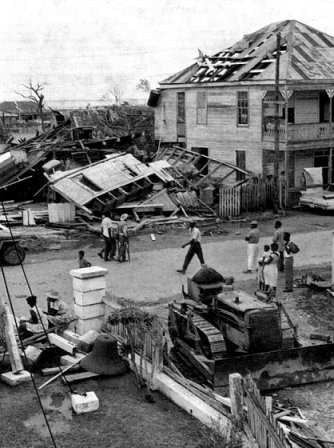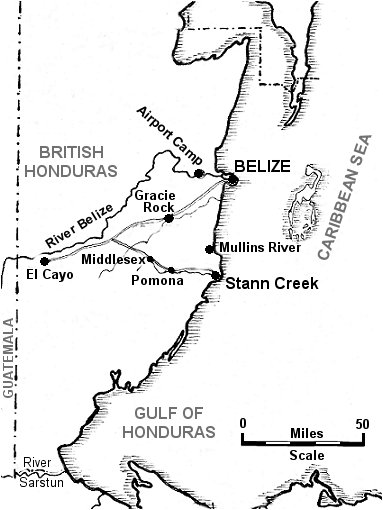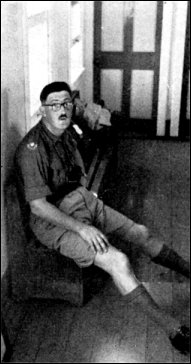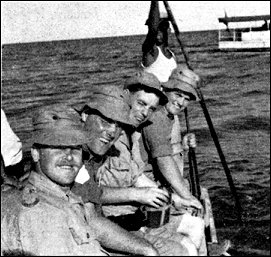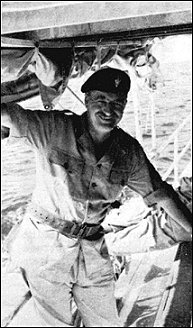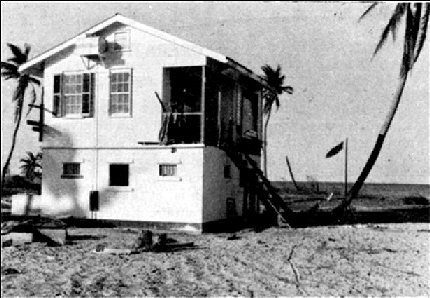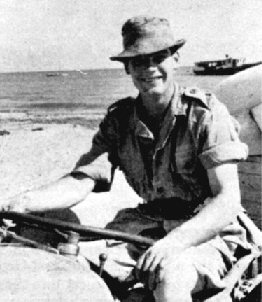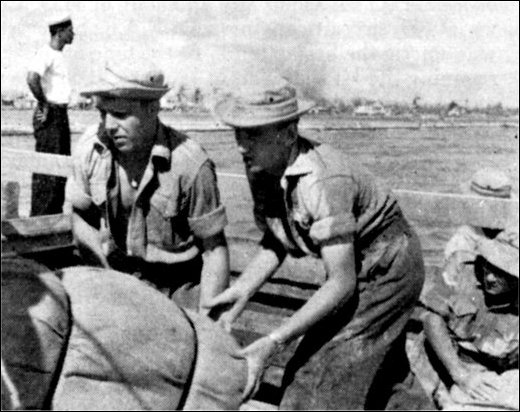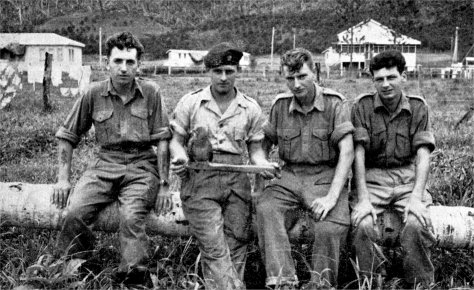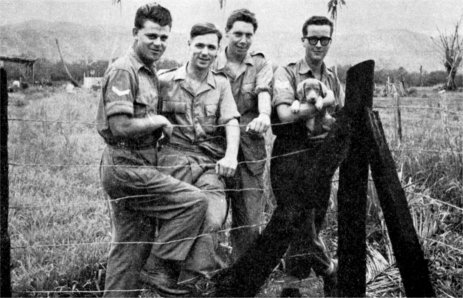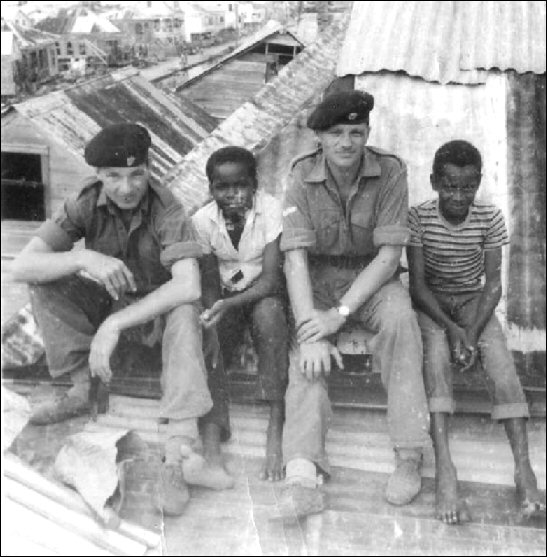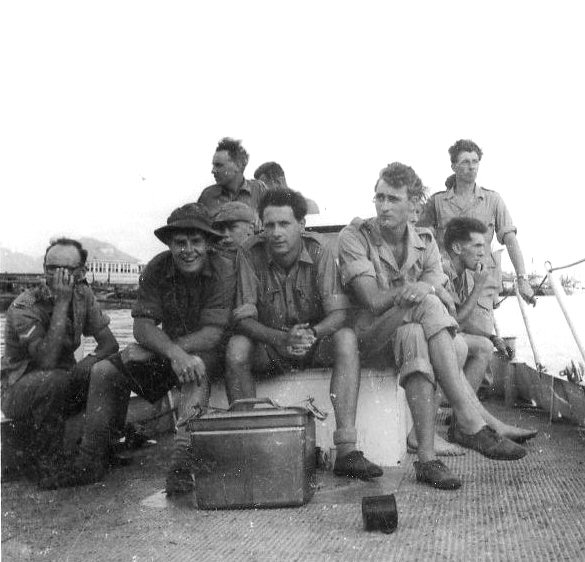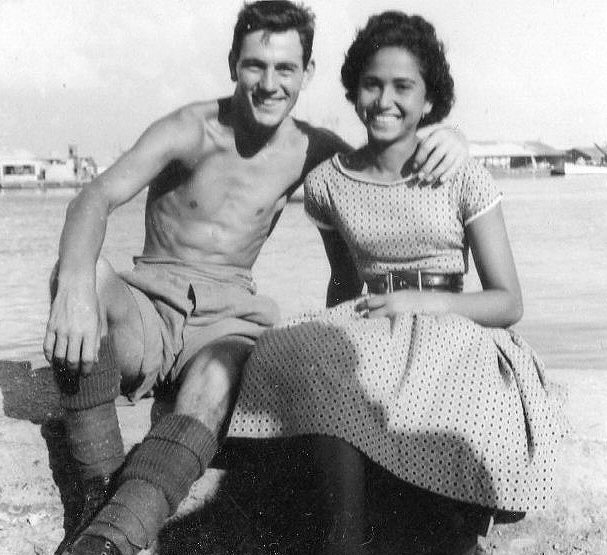1st Battalion Worcestershire Regiment - British Honduras 1961
Hurricane Hattie, which formed in the Caribbean Sea on the 27th October 1961, hit Central America as a strong Category 5. The storm caused enormous damage in Central America, with a death toll of 257, almost all in Belize City. Half of Belize City was demolished by the storm leaving some 15000 homeless. Advance warning of the storm is credited with reducing the number of fatalities. Hattie destroyed an estimated 40% of all buildings in Belize, and damaged half of those that remained; Belize City was damaged so heavily that the national government was relocated inland to Belmopan.
1st Battalion to the rescueAt 3.0 p.m. on Friday, 3rd November 1961, the Commanding Officer, Lieut.-Colonel Peter Hall, D.S.O., received a first warning Order of a probable immediate move to British Honduras, to assist in relief and rescue work following the disastrous Hurricane “Hattie.” |
Map of British Honduras |
Lieut.-Colonel P. G. B. Hall, D.S.O.
Major H. Knox (Q.M.)
Major H. Knox and Capt. A. N. Nisbet |
By 8.0 a.m. on Sunday, 5th November 1961, the first party had already taken off from Lyneham, Wiltshire to fly the Atlantic, and on 6th and 7th November the remainder of the Battalion, less a small Rear Party left to look after Norton Barracks, followed also by air. Their first stop was at Larges U.S. Air Force Base in the Azores. After a couple of hours they took off for Bermuda, arriving on Sunday evening. After a wait of some three hours it was then on to Kingston, Jamaica. The leading elements of the 1st Battalion Worcestershire Regiment arrived in Belize City at 0830 hours on Monday, 6th November 1961, having flown the Atlantic in R.A.F. Transport Command Britannias to Kingston, Jamaica and from there in an assortment of aircraft including British West Indian Airway Viscounts and R.A.F. Shackletons. As the battalion passed through Belize City people were still very dazed after their night of horror in the hurricane and where the combination of mud, washed into the town by the gigantic wave, which followed the hurricane, and the pile of debris and rubbish, combined to make a filthy stench. Soldiers of 1st Battalion Royal Hampshire Regiment were already busy in the streets guarding outside food distribution centres, patrolling the streets and supervising huge fires burning rubbish. The next two days were spent in Stanley Field Airport Camp, preparatory to the final move of the Battalion Group to Stann Creek. The 1st Battalion moved from Belize City to the town of Stann Creek, about 35 miles South of Belize City on the coast, with a population of some 8000. This move was completed by Friday, 10th November, and the group set about the formidable task of resurrecting a demolished township. The main task of the Battalion was to organise relief and reconstruction in the urban and rural areas of the Stann Creek District. At first, while 'A' Company strength slowly built up in Stann Creek, the battalion concentrated mainly in Belize itself, requisitioning all food from the stores and concentrating it in a central food Depot, where it was distributed again to a series of commissariats opened under the supervison of the battalion, but actually run by the merchants of the town, most of whom were Chinese. Immediately on arrival No. 3 platoon ('A' Company) went straight up the valley to Pomona, about 12 miles from Stann Creek. After a day or two in Stann Creek, the rest of 'A' Comapny moved up to join 3 platoon at Pomona. Company H.Q. was set up there, likewise No. 3 platoon, who provided the guards at the local Commissariats. No. 2 platoon went a further 12 miles up the valley to a village called Middlesex, and No. 1 platoon, after reconnoitring the road to Mullins River, went off to Kendal to try to get through to Mango Creek. On Sunday, 12th November, "B" Company arrived at Airport Camp, where they took up residence, followed on Wednesday, 15th November by the remaining fifty of H.Q. Company from Kingston, Jamaica aboard H.M.S. Vidal and latterly the Maya Prince, who disembarked at Stann Creek. Tactical H.Q. was set up in the town of Stann Creek, Lieut.-Colonel P. G. B. Hall and the Intelligence Officer, Captain H. J. Lowles, took over the Police Station and set up a combined Operations Room and Officers’ Mess. Soon the walls became covered with maps, charts. From the moment of the arrival of Tactical H.Q. local government was temporarily taken over by the Battalion. To achieve this end, the Commanding Officer appointed various officers to control civilian departments. Major R. G. A. Leman (Adjutant) was given the job of Town Major. The job of Queen’s Harbour Master was taken over by Captain A. M. Martyn and Captain A. N. Nisbet (M.T.O.), became Minister of Transport! Each department had its civilian head under command of the appointed Officer. Major H. Knox (Q.M.) was made Minister of Food, ably assited by Sergeant Duffy. All shops were compulsorily closed and a currency freeze was put in operation to obviate the undoubted future growth of the black market and illegal monopolies. Food was issued daily to the people in exchange for food coupons which themselves were issued to the population on the basis of one coupon for one day’s work. |
Distruction in Belize City |
|
A committee of local people was formed through which instructions for food, blankets and clothes distribution were issued and reconstruction work coordinated. The labour force was split into gangs and allocated to the more urgent tasks, burial of the dead, of which there were about 62 in Stann Creek, burning of debris and refuse, repair of telephones and lighting systems, etc. For the first few days, each evening a committee meeting was held in the operations room under the chairmanship of Lieut.-Colonel P. G. B. Hall, D.S.O. Present at this meeting were all the officers with civilian departments and their opposite civilian numbers; the Mayor of Stann Creek; the District Commissioner and the Medical Officer. At this conference policy was formulated and events of the day discussed. It was eventually decided to hold this meeting only three times a week. Ten days after the disaster Stann Creek was again habitable with the help of tentage put up by the Battalion behind the hospital. Food, medical and bedding supplies improved daily and the task of rehabilitation went on apace. Soon after the arrival of the 1st Battalion, the Frigate H.M.S. "Londonderry" came to Stann Creek, dropped off a party of technicians to repair the town’s generators and a small party to assist the battalion in Guard Duties. They then patrolled up and down the Coast from Stann Creek succouring the small cays and villages along the coast and reporting on their requirements. As a result of this report a small party under Sergeant Excell (Cpl. Wilson, L/Cpl. Davis, Pte. Davies and Pte. Darby) was sent by customs launch to the village of Mullins River Town to assist them in reconstruction. This town is situated on a narrow coastal strip with low swampy ground inland. The party left at 14.30 hours on Sunday, 12th November 1961 towing a small yacht loaded with stores, and anchored a quarter of a mile off Mullins River Town, about an hour and a half later. The stores were ferried ashore in small dories paddled out by the local inhabitants and a 44 gallon drum of Kerosene, being too big to get into any of the dories, was floated ashore. |
Major R. G. A. Leman |
L/Cpl. Wilson, Sgt. Excell, L/Cpl. Davies, Pte. Darby Heading for Mullins River Town |
The party was met on the beach by the village constable, dressed in his blue trousers, khaki shirt and enormous white helmet, and taken on a tour of what was left of the town. Before the hurricane it had been a small community of 236 engaged mainly on fishing and farming on a small scale. On the night of the hurricane the people barricaded themselves into their wooden houses, mostly on stilts, and waited while the winds mounted. Winds estimated at nearly 200 m.p.h. were followed by waves up to 18 feet high which swept houses, people and animals inland into the swamp. The following morning when the winds and waves had abated the survivors picked themselves out of the swamp and started to retrieve their belongings. All the homes, excluding the Police Station and Catholic Mission, were swept inland. The Police constable and the members of the town council checked the number of survivors, and after rescuing some people from the swamps and others trapped in houses, the number of dead was found to be 42, a fifth of the total population. Sergeant Excell and his party will be stayed there for a few days to assist in the distribution of food and clothing. |
The International Red Cross shipped large quantities of clothing into British Honduras. Distribution of this clothing was, at first chaotic, and it was not until R.S.M. J. E. Stone was appointed Chief Red Cross distributor for Stann Creek that any order or fairness of distribution was at last achieved. The Medical Officer, Captain J. Mathias (R.A.M.C.), was kept very busy in the initial stages of the operation — inoculating and treating injured. On one occassion he took an emergency flight by Royal Naval helicopter to Mullins River to evacuate a badly burned baby. Tactical H.Q. was later moved from Stann Creek to Belize City by sea, Whilst the remaining elements of H.Q. Coy. remained at Stann Creek and 'A' Company 12 miles away in Pomona. The Battalion deployment was as follows during their stay in British Honduras :STANN CREEK - Tactical H.Q., Battalion H.Q. and H.Q. Company. (for locations see map above) |
R.S.M. J. E. Stone |
By the second week of December the battalions work was complete and they prepared for their return to the U.K. in time for Christmas.
The last party of the 1st Battalion returned to the U.K. on the 20th December 1961, landing at London Airport on a B.O.A.C. Boeing 707.
Mullins River Police Station |
Private Stevens |
Pte. Harris, Pte. Mitchell and L/Cpl. Swayne unloading stores at Stann Creek
Pte. Michael Todd, Pte. Maurice Dimmock, Pte. Brinley Pullen, and Pte. David Parrish
L/Cpl. Keith Hughes, Pte. Michael Summerfield, Pte. Brian Slater, Cpl. Terry Richards |
1st Battalion Worcestershire RegimentBattalion HeadquartersLieut.-Col. P. G. B. Hall, D.S.O. (Commanding)
H.Q. CompanyMajor M. R. Ellis (commanding)
'A' CompanyMajor T. A. Batchelor (commanding)
'B' CompanyO.C. Major A. M. Gabb Note: Not all the above went to Belize some of the Battalion remained in the U.K. |
L/Cpl. Tom Lawrence (right) with local boys in Belize
(photo submitted by
Kerry Lawrence, his daughter)
1st Battalion Worcestershire Regiment group in Belize
(photo submitted by
Kerry Lawrence, daughter of L/Cpl. Tom Lawrence)
L/Cpl. Tom Lawrence meeting the locals in Belize
(photo submitted by
Kerry Lawrence, his daughter)
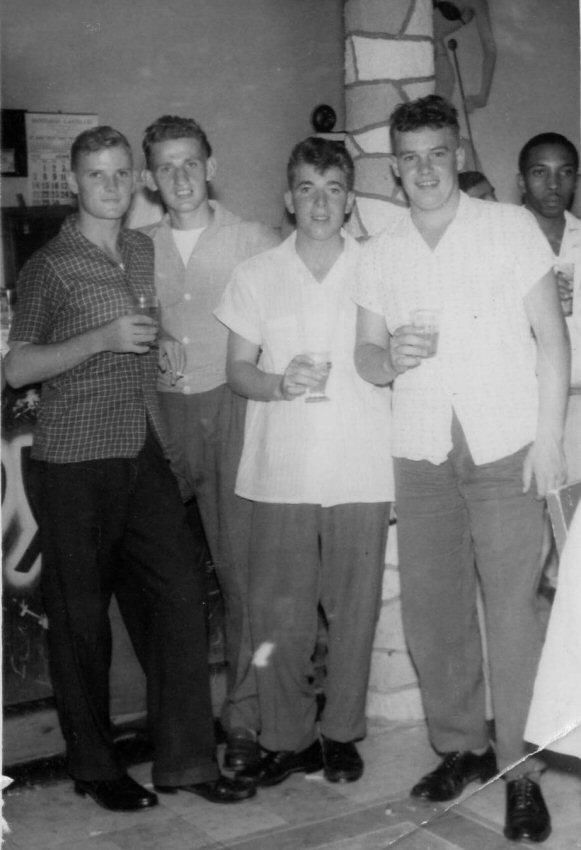
1st Battalion men relaxing in Belize (1961)
Private Brian Dunn on the far left.
(Photo submitted by Brian Dunn)

